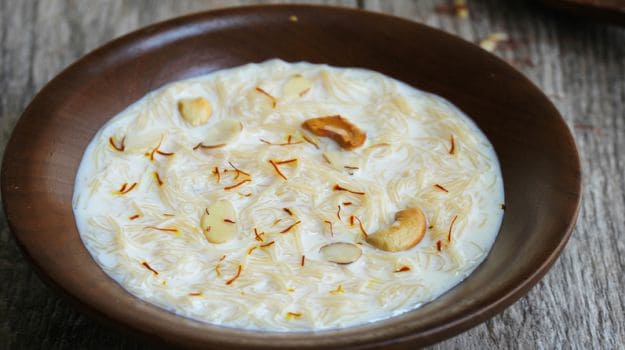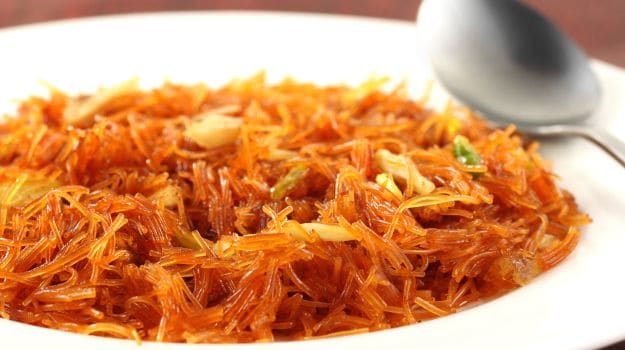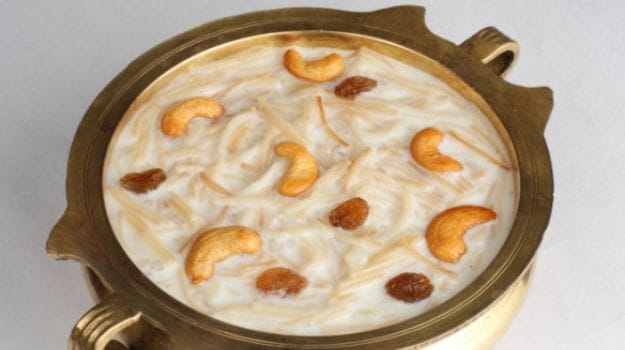Unarguably, seviyan form an indispensable part of Eid festivities. It is something one can't do without and simply can't get enough of. Let's trace back its cultural significance and the reason why it assumes a central position during the festival. We don't quite know whether it was Marco Polo, the famous Venetian traveler of the 13th century, who brought back noodles from China to Italy and hence kick started the pasta revolution. But what we do know for sure is that it was vermicelli that he first encountered in the Far East. That he recognised the strands and named them in his account without describing them in too much detail has given credence to the theory that pasta was already firmly present in the eating cultures of this part of the world. But, it was the trade between the east and the west, following the route Marco Polo took, the silk route as we now call it, that not only facilitated the exchange of capital and goods but of ideas, stories and foods too.Seviyan in India is perhaps a fall out of that tradition of syncreticism. Vermicelli or seviyan as we call them in northern India are pretty pervasive. In China, traditionally the thin noodles were typically made of buckwheat or older grains, though of course today it is the Cantonese style rice strands that are most famous. You can find them as the mai fun (meaning rice) noodles on Cantonese-inspired menus, as stuffing in lumpia rolls, in the bihun goreng of Indonesian food, and all over south east Asia in many stir fries served up with sauce, fish, peanuts, lime and more.In India, such use of the seviyan rice noodles is distinctly different. The closest we have to all those Chinese stir fries is the Seviyan Upma, the popular breakfast dish, spiced with curry leaves and mustard. In northern India, on the other hand, the seviyan have a distinctly different culinary use, leading us to conjecture that these may have arrived in the northern part of the Subcontinent through a different trade route altogether, controlled by the Arabs, who may have brought the Italian pasta in a changed form to the courts of Delhi and Agra.

Eid 2020: In India, such use of the seviyan rice noodles is distinctly different
Eid Special - SeviyanWhen you talk of seviyan in India, you automatically think Eid. This is the most common festive dessert to celebrate the end of Ramzan. Eid-ul-Fitr is in fact described amongst the masses in UP and the Hindi heartland as “meethi Eid”, the sweet festival literally, synonymous with sweet seviyan. There are two kinds of seviyan preparations, either of which is what you would come across should you visit Muslim homes to celebrate the festival: Sheer Khurma and the delicious Kimami Seviyan.
Sheer Khurma, as the name suggests (sheer means milk), is nothing but a kheer or milk pudding. Rice noodles are cooked in thickened milk to which dates (khurma refers to these) and other dried fruits are added to give a thick pudding. This is the most common seviyan preparation on Eid. The Kimami Seviyan, popular in Lucknow, Benares and other parts of the erstwhile Awadh, are a more elaborate preparation. Unlike the sheer dessert, this one is dry, and loaded with ghee and dried fruits, including fried makhane (lotus seeds), raisins and other nuts, along with fragrant spices such as elaichi or green cardamom.
I have always been intrigued by the “kimami” prefix to these seviyan. What exactly is kimam, after which these are named? Those who eat paan, will be even more foxed with this one. The uniquely Awadhi way of layering the betel leaf with a host of ingredients was elevated to almost an art form. To make kimam, which would be put into the paan, was serious and specialised business. Tobacco would be mixed with several scented ingredients (called kimam) before being sandwiched by the superior, designated leaves.
Eid 2020: What exactly is kimam, after which these are namedAdding Flavours in SeviyanThe seviyan obviously have no intoxicants. The kimam in recipes for the dessert refers to thickened, sweet milk that is also poured on to the fried vermicelli. Both the Kimami Seviyan from Benares and the Kimami Paan from the same city by the Ganga are quite famous. So, it is obvious to conjecture that they must be referring to the same “kimam” as an ingredient. But while in the paan, the colloquial usage points to scented substances, in the kheer, it points to sweetened, thickened milk. An Awadhi chef I meet explains this by saying that the kimam in the paan is actually a reference to the gulkand—the sweet rose jam—that also goes with the spices and fragrances into the tobacco. By this definition, anything sweet and fragrant is kimam—and hence the prefix for the seviyan.This is a fair explanation. But more than the pedantry, what should be interesting is the syncretic heritage the Kimami Seviyan reference. This is the Ganga Jamuni world of fusion where ingredients from all over the world, and so-called religious foods have come together with the scents and spices of the Subcontinent to give us unique creations.
Eid 2020: The seviyan obviously have no intoxicantsIn fact, however much we think of the seviyan as only an Eid dish, it is much more than that. Jave, slightly thicker rice noodles than the seviyan, are the quintessential festive food for Rakshabandhan, another monsoon festival in this part of the world. Both show up a tradition of how the vermicelli got Indianised. Food, unlike religions and people, has no boundaries.Here's a seviyan recipe for you to try at home to celebrate Eid: Click here - Meethi Seviyan.About the Author:Anoothi Vishal is a columnist and writes on food for The Economic Times and NDTV Food, and runs the blog amoveablefeast.in. She tracks the business of restaurants and cuisine trends and also researches and writes on food history and the cultural links between cuisines. Anoothi's work with community-based cuisines led her to set up The Great Delhi Pop-Up three years ago, under which she promotes heritage, regional and community-based cuisines as well as researched and non-restaurantised food concepts. She has also been instrumental in reviving her own community's Kayastha cuisine, a blend of Indo-Islamic traditions, which she cooks with her family and has taken across India to a diverse audience.Disclaimer:The opinions expressed within this article are the personal opinions of the author. NDTV is not responsible for the accuracy, completeness, suitability, or validity of any information on this article. All information is provided on an as-is basis. The information, facts or opinions appearing in the article do not reflect the views of NDTV and NDTV does not assume any responsibility or liability for the same.














